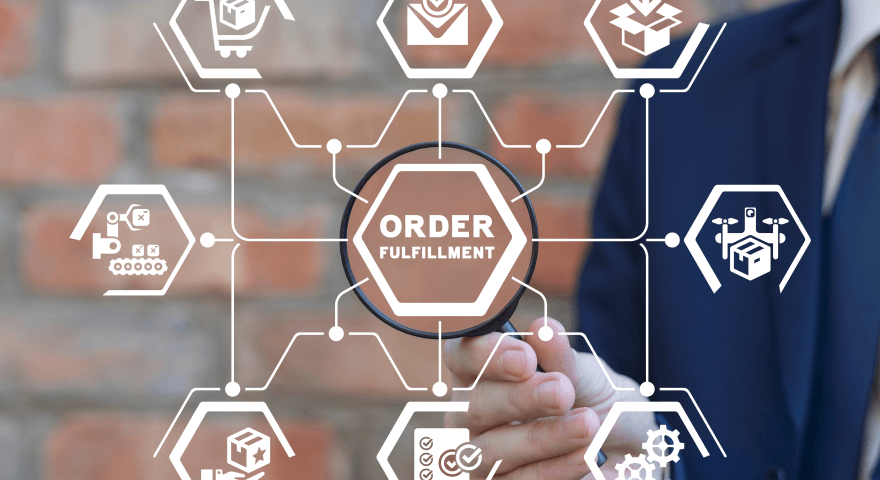Sustainability is one of the top trends in supply chain management, as many businesses are making changes to adapt their supply chains to enable, for instance, carbon reduction. Our sustainability expert Georg Hantschke had a chat with Marc Hetzer, Supply Chain Sustainability Expert at EY Carbon, on supply chain sustainability.
Georg Hantschke: Hi Marc, good to have you here. What challenges do the clients face while making their supply chains more sustainable?
Marc Hetzer: Clients face many challenges regarding sustainable supply chains, but two challenges are quite predominant. One challenge is located in the initial stage, when it comes to the access and gathering data from the supply chain network. Another challenge is located on the other end of the project, where you execute the measures defined throughout the projects to reduce the carbon footprint. We see a lack of transparency combined with an approach where customers want to get 100% of the data. A classical bottom-up approach like this often creates or leads to a dead end. On one side, data sourcing is super time-consuming and contains risks delaying the whole exercise. And on the other side, if you're not making any progress, it slightly degrades the stakeholder motivation to continue the project without visible progress.

As mentioned before, the execution of the measures is sometimes critical. Companies find it challenging to prioritize and assign clear responsibilities. Also, especially in larger organizations, responsibilities throughout the supply chains are split up into different domains. So it is important to assign who is responsible for planning the optimization part, the procurement, or transport logistics. And this always plays together with the different departments coming in from the sustainability aspects where they often see cross-functional exercises going on, often leading to a discussion around the competencies that ultimately leads to less progress throughout projects.
Georg: When I speak to clients or supply chain experts, I see that they are overwhelmed when discussing sustainability. It is vast and has multiple layers, like decarbonization, circular economy, circular supply chains... It's new, and requires a fundamental change regarding how business is done. If someone wants to make their supply chain sustainable, they would have to invest a lot of time and resources to develop the sustainability strategy.
Usually, these end up in a PowerPoint document or an Excel file. You have to operationalize that strategy to understand what sustainability means for your supply chain and how you must adapt.
On top of this, Marc, there are decarbonization challenges, like the EU green deal and climate targets. So, how and what do you do to overcome these challenges with your clients?
Marc: There are two things we do. When it comes to this first challenge I mentioned: one of the most significant issues is gathering or collecting data across the value chain network.
So, we have been developing a slightly different approach with a more simplified calculation that is somewhat different from the classical bottom-up one witnessed in the market.
We are trying to tackle the calculation from the top-down, basically using all available information, but not spending too much time collecting that and converting that data basically with material-specific emission factors from various data sources. It leads us to our normalized footprint, which is the high-level footprint that indicates where we currently stand with our emissions.
And what we also do is take into account the existing measures of a company that uses green energy or more recycled materials as their raw material, which gives us a deduction of the emissions that are piling up in the network. It leaves us with the number of emissions the company works on with the clients. Then we define the appropriate measure and transform those measures into an execution roadmap.
And we are aware that this approach might look kind of high level at the beginning. Still, it enables large organizations with a large network to reduce the complexity in the network and quickly find a starting point to get going.
We refine calculations with more data available throughout the project and the ongoing measures. We add more and more details to get to the last points where we also squeeze out the last options and measures that we can take to reduce the footprint across the supply chain domains.
This approach was also one of the key reasons to collaborate with aioneers, as EY was looking for a software counterpart with a similar mindset. EY and aioneers had similar outlooks on approaching the challenges resulting from complex supply chain environments with an adaptable and flexible solution to accommodate the ever-changing circumstances we face in the individual prime projects.
All projects are different and may have different pre-requirements, especially when you look at different industries. This situation needs a solution that is not standard from the shelf. A solution that can be adopted, squeezed, and tailored to the individual challenge is something that the aioneers software is providing, helping us provide excellent service to their customers.
The other valuable benefit is seeing it as an end-to-end solution or end-to-end journey. We do start with the data gathering and analytics, transfer them into measures they want to take, prioritize them, and ultimately include them in the AIOimpact module. The software enables execution tracking along the timeline and sees its progress. This solution is unique, and this is also something that adds value to their clients.
Georg: A company always wants to see whether the actions, measures, and initiatives they drive yield the desired result. We want to see that very quickly. So, we have found a way to enable that digitally so that the company is not steering blindly towards a particular goal while there are various checkpoints along the way. We ensure that the companies immediately understand whether the work they are putting in helps decarbonize their supply chains and yield the desired results.




.jpg)



.png)
